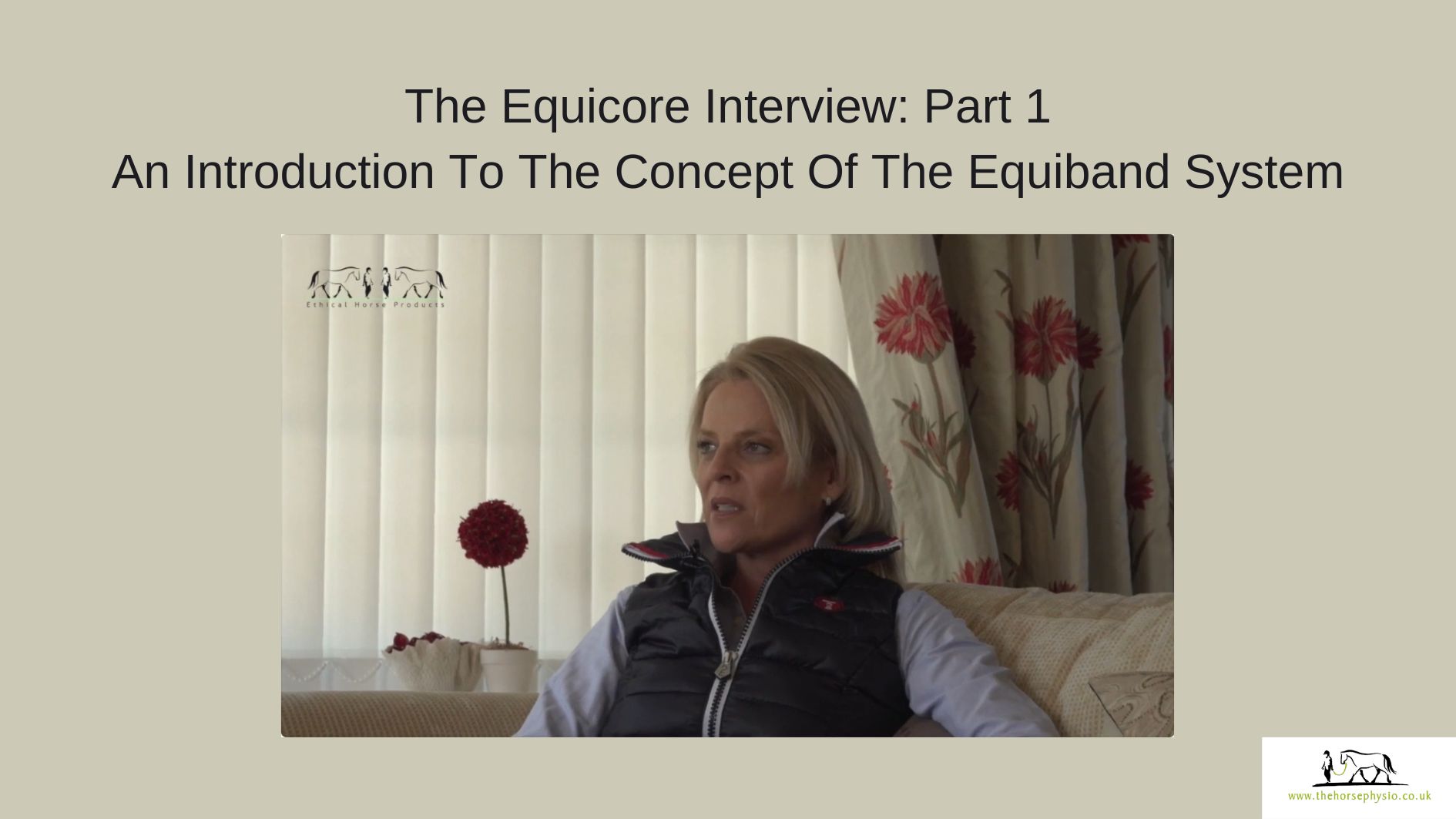Step into the world of cutting-edge equine therapy as Chartered Physiotherapist Sue Palmer engages in a riveting conversation with Nicole Rombach, APM, MEEBW, CCBW, PG AM, MSc., PhD (Equine Neck Pain), one of the co-founders of the groundbreaking Equiband system.
Join us for an authoritative exploration as we delve into the innovative methodologies behind the Equiband system from Equicore Concepts. This video is part one of an enlightening series where Sue Palmer delves into the intricacies of Equiband alongside one of its pioneering creators, Nicole Rombach.
In May 2018, Sue Palmer and Nicole Rombach got together to talk about Equicore Concepts, and the Equiband system. Sue asked questions put forward by horse owners, physiotherapists, and veterinarians. I hope this article helps you learn how to help your horse as much as Sue felt it helped her! Below is the (lightly edited) transcript of Part One.
Sue
I’d like to introduce Dr Nicole Rombach, and I’d like to say thank you very much for joining us today to talk about the Equiband system from Equicore. We’ve got a few questions we’d like to ask you. But before. that, can I just ask you to introduce yourself, so that people know a little bit about you?
Nicole
Yes, hi Sue, good morning, wonderful to be here, and thank you for the opportunity to be able to talk about the Equiband system. I’m one of the founders and owners of Equicore concepts. The key product in our company is the Equiband system which was launched in 2011.
Sue
Time flies by.
Nicole
It sure does.
Sue
So, what was it that made you come up with a concept in the first place?
Nicole
A number of cases that we would see of horses requiring postural retraining. So, from the physiotherapy group that I was working with, from my research as part of my PhD studies, the emphasis was strong on core stability. So. spinal stability, which then translates into dynamic stability, stability in movement. In the majority of the cases that would come either to the veterinary clinic or cases that would be seen outside, it became evident that these horses just needed more postural control, so dynamic stability.
A series of ground exercises have been developed and have been used over many years, but those are, again, static exercises. So, it was really looking at how could we best design a system that would be able to transfer those ground exercises into dynamic movement, so in ridden work for example. So that was the embryonic stage of the Equiband system.
Sue
So as a Chartered Physiotherapist, that makes a whole world of sense, and I think that pretty much everyone has heard of Pilates, and pretty much everyone knows that they themselves should be doing some form of Pilates. And really it makes sense that our horses should be doing something similar, because core stability is essential for longevity and comfort really.
Nicole
It is indeed key for controlled movement. There’s a large group of research in the human field already, showing that if the core is dysfunctional then that slack, if you like, instability, will be taken up by the periphery. So, for example, people who develop hip or knee instability can develop that as a secondary result of core instability. So the same for the horse. And especially when you consider that a lot of the performance horses nowadays are not moving as much as they were in the wild. So in the wild the horse is grazing 16 or 17 hours a day, constantly in movement. Whereas the performance horse nowadays is really on the equivalent of a sedentary lifestyle, so in the stable, some time in the field, And in relationship to the work segment and the entire day, so over 24 hour period, it really is a much smaller segment of having that horse move if you like. So. again, that semi-sedentary lifestyle that we know causes core dysfunction people, I would say can be translated to some extent to the equine world too.
Meet Sue Palmer
Sue Palmer MCSP, aka The Horse Physio, is an award-winning author, educator, and Chartered Physiotherapist who promotes kind and fair treatment of horses through empathetic education. Sue specialises in understanding the links between equine pain and behaviour and is registered with the RAMP, the ACPAT, the IHA, the CSP and the HCPC.
Popular books and online courses include:
Harmonious Horsemanship, co-authored with Dr Sue Dyson (book)
Understanding Horse Performance: Brain, Pain or Training? (book)
Horse Massage for Horse Owners (book)
Horse Massage for Horse Owners (online course)
Stretching Your Horse: A Guide to Keeping Your Equine Friend Happy and Healthy (online course)
Thank you
Thank you for tuning in; I truly value your time and am grateful you chose to spend it with me. If you found value in this article, please support me by liking, subscribing, following, and sharing it. Remember to turn on notifications for future content from The Horse Physio. Additionally, take a moment to subscribe to my newsletter. Your support means the world to me, and it helps me continue creating content that matters to you.
